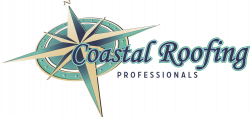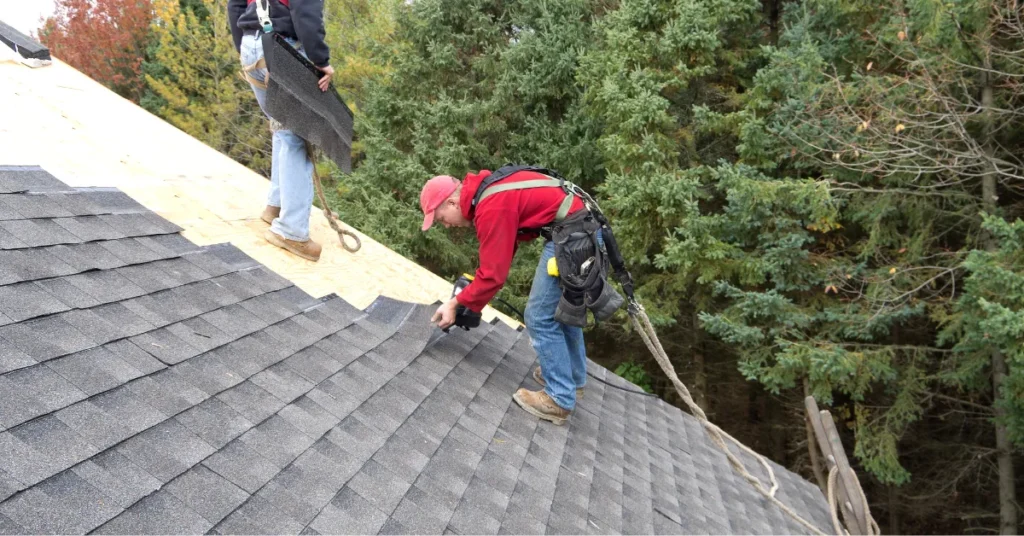Your roof is one of the most vital parts of your home, acting as the first line of defense against the elements. Over time, even the sturdiest shingle roofs can wear out or get damaged, especially in areas prone to harsh weather. Acting quickly is essential if you’re dealing with cracked, curling, or missing shingles. In this blog, we’ll look closer at shingle roof repair options and provide valuable insights into what’s involved in shingle roof installation to keep your home safe and well-protected.
Why Fixing Your Shingle Roof is Essential
Shingle roofs, especially those made from asphalt shingles, are known for their durability, affordability, and ability to enhance your home’s curb appeal. However, even the highest-quality shingles can suffer from damage over time due to exposure to wind, rain, and the sun’s UV rays. When minor problems like cracks, leaks, or missing shingles appear, addressing them quickly can prevent much bigger issues, such as water damage, mold growth, and even structural damage to your home’s roof deck or foundation.
Common Causes of Roof Shingle Damage
Understanding why shingle roofs get damaged is crucial to spotting issues early. Here are some of the most common causes:
Severe Weather:
High winds, hail, heavy rain, snow, and extreme heat can break or loosen shingles. Hailstones, for example, can dent or puncture shingles, creating entry points for water.
Aging:
Even the best-maintained roofs will deteriorate with time. As they age, shingles become brittle and more likely to crack or curl at the edges. The granules that protect shingles from UV rays also start to wear away, leaving them vulnerable to damage.
Poor Installation:
If your roof is not installed correctly, it may not perform as expected. Problems like improper nailing, inadequate flashing, or poor alignment of the shingles can all lead to premature damage or failure.
Lack of Maintenance:
Neglecting regular roof inspections and maintenance can allow small problems to worsen over time. Clogged gutters, debris buildup, and moss growth can exacerbate damage or cause new issues.
Falling Debris:
Overhanging tree branches or debris from nearby structures can scratch or break shingles, especially during storms. This can lead to water infiltration and further damage.
Top Shingle Roof Repair Solutions
When it comes to fixing shingle roofs, a few go-to solutions can address various levels of damage. Knowing which approach is right for your roof can help you maintain its integrity and avoid costly repairs in the future.
Asphalt Shingle Repair
For minor damage like a few missing or broken shingles, most home improvement stores have the materials you need to handle minor repairs. You can find replacement shingles, adhesives, nails, and tools in one place. Make sure you’re comfortable working on a roof and that the issue is limited to small, isolated areas. For larger or more complicated problems, professional help is recommended.
Roof Flashing Repair
Roof flashing is a thin metal material installed around areas where the roof meets vertical surfaces, such as chimneys, vents, skylights, and dormers. Its job is to direct water away from these vulnerable areas. Damaged or loose flashing can lead to leaks, especially during heavy rainfall or snowmelt. Repairing or replacing flashing is a critical part of shingle roof repair, as it prevents water from seeping into your roof and causing more extensive damage.
Professional Roof Inspections
While you can spot some apparent issues yourself, there are many roof problems that only a trained eye can catch. Professional roofers are experienced at identifying less visible issues, such as small leaks, weakened shingles, or structural damage that could lead to bigger problems. Scheduling an inspection at least once a year (or after major storms) can give you peace of mind and help extend the life of your shingle roof.
Replacing Damaged Shingles
Replacing them individually is a straightforward fix in cases where the damage is limited to a few shingles. This allows you to avoid the expense of a total roof replacement while protecting your home from leaks and water damage.
What to Expect from a Shingle Roof Installation
Suppose your roof is beyond repair, or you want to upgrade for better protection or curb appeal. In that case, a complete shingle roof installation is the best solution. A new roof protects your home from the elements and boosts its value and energy efficiency.
Tips to Extend the Life of Your Shingle Roof
Maintaining your roof doesn’t have to be complicated. A few simple habits can go a long way in extending the life of your shingle roof:
Inspect Regularly: Look for signs of damage like cracked, curled, or missing shingles. Pay attention to leaks or water spots inside your home, indicating roof problems.
Keep Gutters Clean: Clogged gutters can cause water to pool on your roof, leading to leaks and shingle damage. Clean out leaves and debris regularly, especially after storms.
Trim Overhanging Branches: Trees can be beautiful, but branches that hang over your roof can scratch or break shingles, especially in strong winds. Keep them trimmed back to avoid damage.
Seal Cracks and Gaps: If you spot any cracks or gaps in your shingles or flashing, seal them with roofing sealant to prevent water from getting in.
Conclusion
Taking care of your shingle roof is crucial for the longevity and safety of your home. Whether you’re facing minor issues or considering a complete replacement, understanding your options can make all the difference. Regular inspections, timely repairs, and proper maintenance will protect your investment and enhance your home’s value.
Frequently Asked Questions (FAQs)
How long do shingle roofs last?
The lifespan of a shingle roof can vary based on the type of shingles used, the installation quality, and the weather conditions where you live. Generally, asphalt shingle roofs last between 20 to 30 years. High-quality shingles with proper maintenance can even last up to 40 years. Regular inspections and prompt repairs can help extend your roof’s lifespan.
How do you clean shingle roofs?
Cleaning your shingle roof can prevent algae, moss, and debris from causing damage. Use a soft-bristle brush or a low-pressure water hose to gently remove dirt, moss, and algae. Avoid using a high-pressure washer, which can strip the protective granules off the shingles. If moss or algae are a problem, use a specialized roof cleaner to kill these growths.
How do you repair a shingle roof?
Repairing a shingle roof typically involves removing and replacing damaged shingles with new ones. Start by carefully lifting the surrounding shingles to remove the damaged pieces. Once removed, replace the shingle with a new one, securing it with roofing nails and adhesive. Check for leaks or signs of water damage underneath before completing the repair.
How do you repair a shingle roof leak?
To repair a shingle roof leak, first locate the source of the leak, which may be a damaged shingle, missing flashing, or a cracked seal around a vent. Once you’ve found the leak, remove the damaged shingle or flashing, replace it with new material, and apply a roofing sealant to ensure a watertight fix. Make sure to check the surrounding area for any additional signs of damage.
How do you repair a leaky asphalt shingle roof?
A leaky asphalt shingle roof can be repaired by identifying the damaged area, replacing the broken or missing shingles, and applying a roof sealant to ensure no water can penetrate the roof’s surface. Acting quickly when you notice a leak is essential, as even minor leaks can lead to significant damage over time if left untreated.


